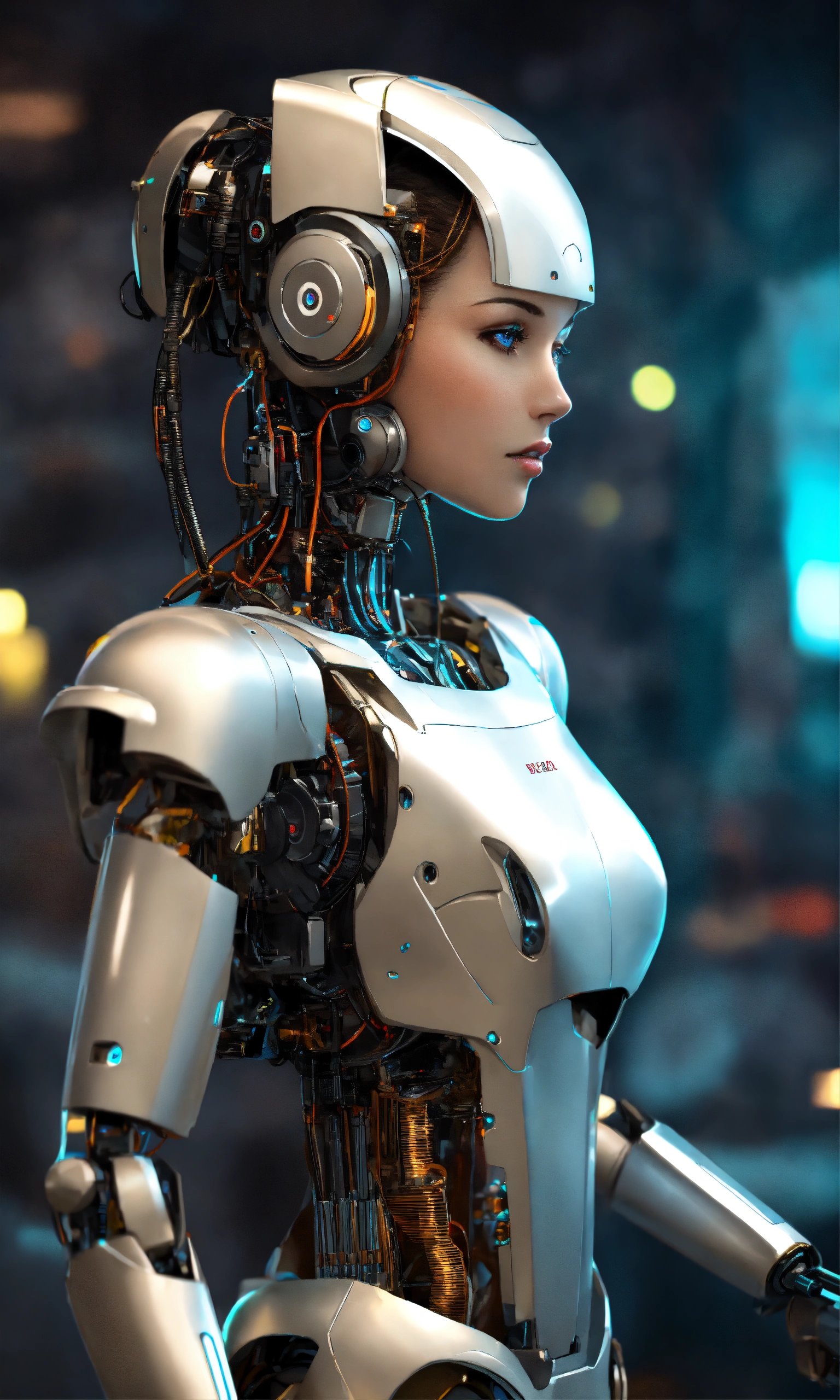Robotic Transformer 2 (RT-2) – Vision, Language, and Action
In the dynamic field of robotics, the seamless integration of visual perception, language understanding, and physical actions has long been a formidable challenge. Enter Robotic Transformer 2 (RT-2), a groundbreaking innovation that not only addresses this challenge but also propels the realm of intelligent robotic control into a new era.

I. Introduction
A. Overview of Robotic Transformer 2 (RT-2)
RT-2 represents a significant advancement in robotics, offering a unique solution to the longstanding challenge of integrating vision, language, and action within a single, cohesive model.
B. Significance of Bridging Vision, Language, and Action
The ability of RT-2 to bridge the gap between vision, language, and action holds profound implications for the future of robotics, paving the way for more intuitive and intelligent robotic systems.
II. Robotic Transformer 2 – Unifying Vision, Language, and Action
A. Core Functionality of Robotic Transformer 2
At its core, Robotic Transformer 2 achieves a groundbreaking feat by seamlessly unifying the traditionally separate domains of vision, language, and action into a single, end-to-end model.
B. Integration of Vision-Language Models
The integration of vision-language models, particularly PaLM-E and PaLI-X, plays a pivotal role in enhancing RT-2’s capacity to comprehend visual information and natural language commands.
C. Achieving an End-to-End Model
Through the fine-tuning process on a combination of robotic trajectory data and web-scale vision-language tasks, RT-2 not only comprehends but also translates visual and linguistic inputs into meaningful robotic actions.
III. Harnessing the Power of Web-Scale Data
A. Pre-training on Massive Datasets
A key factor contributing to RT-2’s success is its utilization of vast web-scale data. Pre-training on massive datasets of text and images provides RT-2 with a rich understanding of the world and its intricacies.
B. The Role of PaLM-E and PaLI-X
The foundational knowledge acquired during pre-training, coupled with fine-tuning on robotic data, empowers Robotic Transformer 2 with the ability to generalize its knowledge to new objects, environments, and tasks.
C. Generalization to New Objects and Environments
RT-2’s exceptional adaptability and versatility stem from its ability to generalize its knowledge, making it a valuable tool for real-world applications.
IV. Emergent Semantic Reasoning
A. Going Beyond Task Execution
RT-2’s capabilities extend beyond mere task execution; it exhibits signs of emergent semantic reasoning, allowing it not only to follow instructions but also to grasp the underlying concepts and relationships involved.
B. Grasping Concepts and Relationships
The model’s capacity to perform tasks like using an object as an improvised tool showcases its ability to understand and apply concepts in novel situations.
C. Examples of Emergent Reasoning in Robotic Transformer 2
Whether picking up an object creatively or selecting a suitable beverage based on expressed needs, RT-2 demonstrates emergent reasoning that goes beyond predefined instructions.
V. Advancing Robotic Control
A. Generalization in Real-World Applications
RT-2’s ability to generalize to new situations and tasks positions it as a valuable asset in various real-world applications, enhancing the capabilities of intelligent robotic systems.
B. Semantic Awareness and Intelligent Execution
The model’s understanding of semantics enables it to interpret instructions and execute them in a meaningful way, leading to more effective and context-aware robotic control.
C. Emergent Capabilities Enhancing Robot Behavior
The emergence of reasoning capabilities opens up new possibilities for intelligent robot behavior, expanding the scope of tasks and interactions that RT-2 can handle.
VI. Applications and Implications
A. Domestic Robotics
RT-2 could power robots that seamlessly interact with their environment and respond to natural language commands, revolutionizing the landscape of domestic robotics.
B. Industrial Robotics
In the industrial sector, RT-2 could enhance the capabilities of robots, enabling them to adapt to new tasks and environments with unprecedented flexibility.
C. Healthcare Robotics
The healthcare industry stands to benefit as Robotic Transformer 2 could revolutionize patient care and rehabilitation, offering assistance in ways previously unattainable.
D. Impact on Human-Robot Interaction
The implications of Robotic Transformer 2 extend beyond specific applications, influencing the very nature of human-robot interaction. As robots become more capable of understanding and responding to our needs, we can expect to form deeper and more meaningful connections with them.
To learn about the basics of AI, you can read my post – What is AI? A Comprehensive Introduction for Beginners
VII. Conclusion
A. Robotic Transformer 2 as a Pivotal Moment in Robotics
Robotic Transformer 2 marks a pivotal moment in the evolution of robotics, bridging the gap between vision, language, and action. Its ability to generalize, reason, and interact with the world in a meaningful way opens up a world of possibilities for intelligent robotic systems.
B. Anticipating a Future with Intelligent Robotic Systems
As Robotic Transformer 2 continues to develop, we can anticipate a future where robots seamlessly integrate into our lives, becoming invaluable partners and collaborators.
Before you dive back into the vast ocean of the web, take a moment to anchor here! ⚓ If this post resonated with you, light up the comments section with your thoughts, and spread the energy by liking and sharing. 🚀 Want to be part of our vibrant community? Hit that subscribe button and join our tribe on Facebook. Let’s continue this journey together. 🌍✨
FAQs about Robotic Transformer 2
- Can RT-2 adapt to completely new tasks on its own?
- Yes, RT-2’s generalization ability allows it to adapt to new tasks and situations independently.
- How does RT-2 contribute to healthcare robotics?
- RT-2 can revolutionize healthcare robotics by assisting with patient care and rehabilitation tasks.
- What sets RT-2 apart from traditional robotic models?
- RT-2’s unique feature lies in its seamless integration of vision, language, and action, providing a holistic approach to robotic control.
- Is RT-2 limited to specific industries, or can it be applied universally?
- RT-2’s adaptability makes it applicable across various industries, from domestic to healthcare and industrial robotics.
- How does RT-2 influence human-robot interaction?
- RT-2’s understanding and response capabilities contribute to more meaningful and deeper connections in human-robot interaction.
